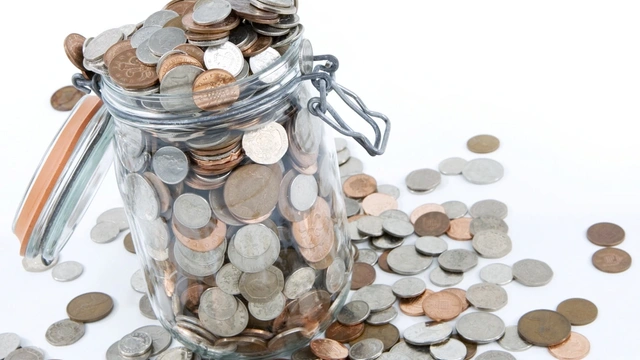Not many people can honestly say that budgeting is their favourite part of adult life. But since it’s got to be done, could jam jars sweeten the deal?
The jam jar method of budgeting involves dividing money into different pots – or jam jars – for different expenses. When you need to pay a bill, you take money from that jar.
Although we pay more of our bills digitally by Direct Debit these days, you can still use the principles of jam jar budgeting with online banking. You could try it yourself in just three steps.
Step 1: Draw up a budget
First, you’ll need to create a budget. This will include your income and all your outgoings. It’ll show you what you spend on different things and help you decide how to split your money into different jam jars.
When writing up your budget, online banking is a good place to start. Many banks have a section in your account where you can see your monthly spending grouped into different categories. This can form the foundations of your budget. You may want to compare a few months to make sure occasional expenses, like gifts or annual insurance policies, are included. Or, you can add them to your budget separately.
Another way to compile your budget is to do it yourself. This might work better than using information from your bank if you mostly use cash or a credit card. Using a budgeting tool can help you make sure you include everything. Money Helper’s budget planner is so detailed, it even covers one-off expenses!
Step 2: Decide how to split your money
Once you’ve got your budget, you can decide how to split your money into jars. There’s no set way to do this, it’s up to you. Here are some ideas:
- Wants and needs. You could divide your money into two pots. One of them is for needs, like essential bills and groceries. The other is for wants. These things may not be luxuries, but aren’t absolute essentials either.
- Spending categories. If your budget combines your spending on similar things into categories, then you may decide to have a “jar” for each one. For example, one for your rent or mortgage, another for utility bills, and so on. You could even have “jars” for hobbies or entertainment.
- Planning for the future. You may want to create a “jar” that allows you to budget monthly for expenses that come round once a year, like insurance renewals. Or, if you’re saving up for something, like a holiday, wedding, or even a house, you could create a "jar" to help you achieve that goal.
Step 3: Set up your jars
The final step is to set up your jars! In the past, people would have used cash and actual jars to do this. But these days you can set up your jars online through your bank account.
How this works depends on who you bank with, and on the purpose of your jars. Some banks may simply allow you to enter the numbers from your budget and track them as you spend throughout the month. Others may allow you to move money into separate “pots” within your account. This stops that money from being immediately spendable, so you can’t dip into it by accident.
You may not be able to pay bills directly from pots, though. So, be sure to check this before you accidentally miss a payment!
If one of your jars is to help you save up for something, then you may want to open a savings account to act as that jar. You can store your money in it, and earn some interest, too.
You can use cash, but be careful not to miss any payments
Using cash can make it easier to keep track of your spending and stick to your budget. But it’s unlikely you’ll be able to manage your entire budget in cash. Some bills and expenses have to be paid by Direct Debit, standing order or card payment, with no cash option.
If you choose to use cash as part of your budget, make sure you leave enough money in your account to pay the bills that cash can’t cover. If you don’t and you miss a payment, you could face penalty charges. Your credit score could also be affected if you don’t pay your bills on time.
Remember to think about your money’s safety and have a backup
Whether you manage your budget completely online or choose to use cash for some things, it’s worth considering how safe your money is. If cash gets lost or stolen, you may never get it back. So, it’s probably wise to withdraw cash as you need it, to minimise the amount you could lose.
Likewise, if you experience fraud on your bank account, you may temporarily be out of pocket and have your account access restricted while the bank investigates. In this situation, it’s sensible to have a bit of cash to hand to keep you going until order is restored.
Looking for a different way to budget? Try the 50/30/20 method!
Helen is a personal finance editor who’s spent 11 years (and counting!) in the finance industry. She creates content on everything money with the goal of getting people thinking – and talking – about their finances in ways they may not have done before.
![Email icon]()
Become a money maestro!
Sign up for tips on how to improve your credit score, offers and deals to help you save money, exclusive competitions and exciting products!
Find this useful? Share it with others!









